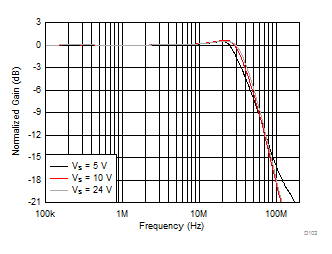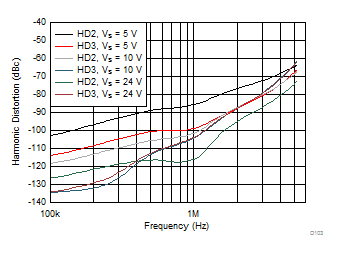JAJSFO4B August 2017 – December 2018 OPA2810
PRODUCTION DATA.
- 1 特長
- 2 アプリケーション
- 3 概要
- 4 改訂履歴
- 5 Pin Configuration and Functions
-
6 Specifications
- 6.1 Absolute Maximum Ratings
- 6.2 ESD Ratings
- 6.3 Recommended Operating Conditions
- 6.4 Thermal Information
- 6.5 Electrical Characteristics: 10 V
- 6.6 Electrical Characteristics: 24 V
- 6.7 Electrical Characteristics: 5 V
- 6.8 Typical Characteristics: VS = 10 V
- 6.9 Typical Characteristics: VS = 24 V
- 6.10 Typical Characteristics: VS = 5 V
- 6.11 Typical Characteristics: ±2.375 V to ±12 V Split Supply
- 7 Detailed Description
- 8 Application and Implementation
- 9 Power Supply Recommendations
- 10Layout
- 11デバイスおよびドキュメントのサポート
- 12メカニカル、パッケージ、および注文情報
パッケージ・オプション
メカニカル・データ(パッケージ|ピン)
サーマルパッド・メカニカル・データ
- DCN|8
発注情報
6.11 Typical Characteristics: ±2.375 V to ±12 V Split Supply
at VO = 2 VPP, RF = 1 kΩ, RL = 1 kΩ and TA ≈ 25°C (unless otherwise noted)
| Simulated with no output load |

| Measured then fit to ideal 1/f model |

| Simulated Curves, VS = 5 V and 10 V |

| VS = ±12-V |

| 70 units, DGK package |
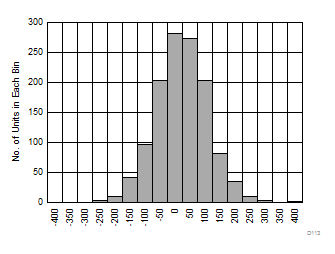
| Input offset voltage (µV), 1246 units |

| Measured then fit to ideal 1/f model |
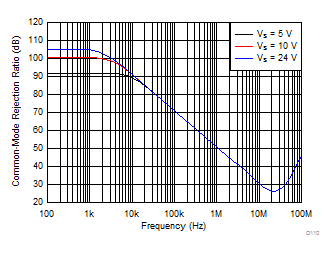
| Simulated curves |

| Simulated curves, VS = 24 V |

| Abs (VIN,Diff (max)) = VS when VS < 7 V |
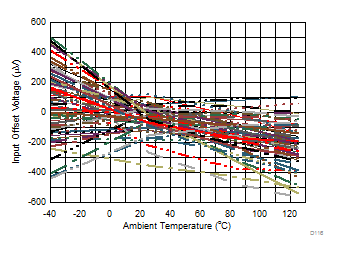
| 70 units, DGK package |

| Input offset voltage drift (µV/°C), –40°C to +125°C fit, 70 units |
